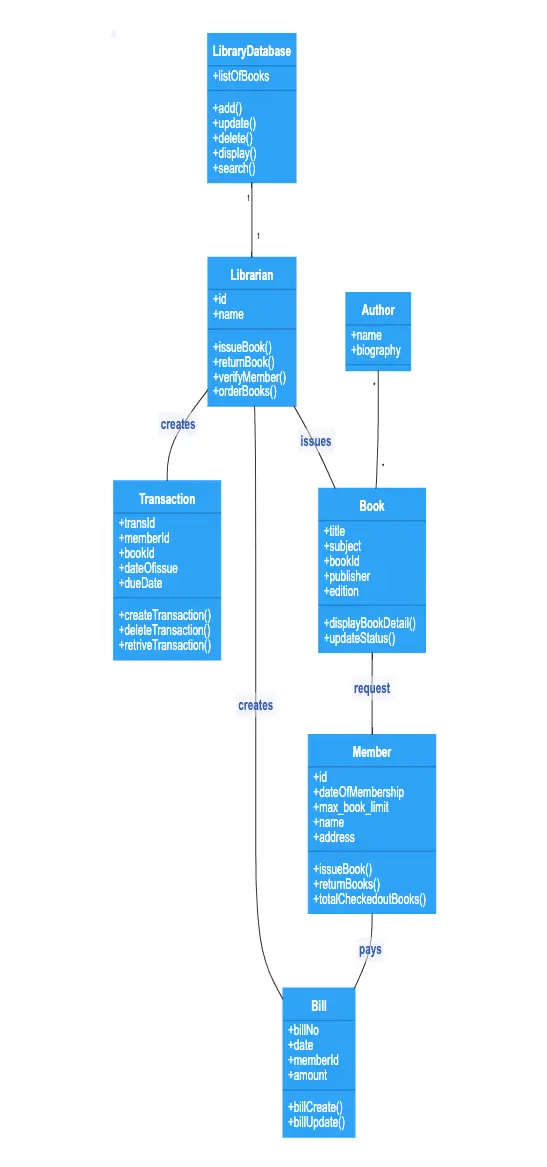This class diagram represents a library management system. Members request a book, and the librarian creates a transaction and a bill. The member pays the bill and the librarian issues a book. Additionally, the book class connects to the author class, showing that each book has an author. The librarian has access to the library database.

Edit this diagram in Gleek
Library management system diagram code in Gleek
Transaction
+transId
+memberId
+bookId
+dateOfissue
+dueDate
+createTransaction()
+deleteTransaction()
+retriveTransaction()
Bill
+billNo
+date
+memberId
+amount
+billCreate()
+billUpdate()
Librarian
+id
+name
+issueBook()
+returnBook()
+verifyMember()
+orderBooks()
Library Database
+listOfBooks
+add()
+update()
+delete()
+display()
+search()
Book
+title
+subject
+bookId
+publisher
+edition
+displayBookDetail()
+updateStatus()
Author
+name
+biography
Member
+id
+dateOfMembership
+max_book_limit
+name
+address
+issueBook()
+returnBooks()
+totalCheckedoutBooks()
Librarian
+id
+name
+issueBook()
+returnBook()
+verifyMember()
+orderBooks()
Book-request-Member
Librarian-creates-Transaction
Librarian-creates-Bill
Member-pays-Bill
Librarian-issues-Book
Author{*}–{*}Book
Library Database{1}–{1}Librarian
About class diagrams
Class diagrams are used in software engineering to describe the structure of a system. A class diagram uses Unified Modeling Language (UML) to show the classes, attributes, methods (or operations), and their relationships to each other in the system. Class diagrams prove valuable in object-oriented modeling. Class diagrams can be used to model the data structure or to design a system in detail.
Similar class diagram examples
Order processing system class diagram
Restaurant management system class diagram
Student result management system class diagram
HR management system class diagram
Movie enumeration class diagram
Video rental system class diagram
Course registration system class diagram